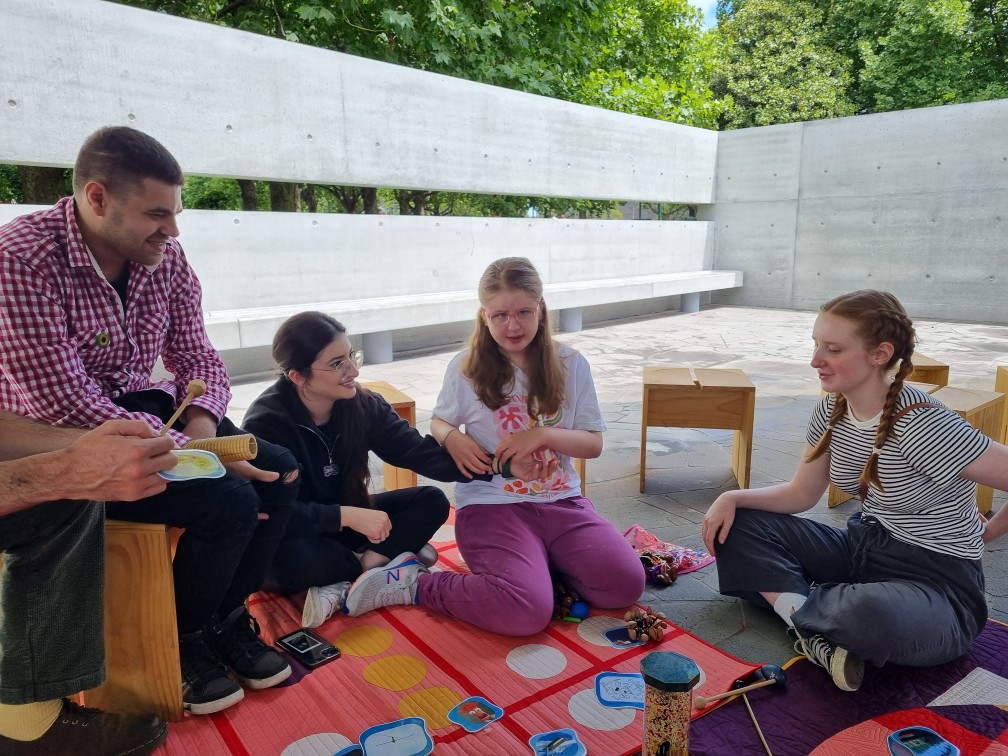A profound mission to raise awareness and advocate for individuals who communicate non-verbally and have intellectual and developmental disabilities.
Feature image: Ilianna and attendees at the workshop
This year, Ilianna Ginnis, one of our access consultants at Architecture & Access, curated the Unity Lab commission with the MPavilion for the MPavilion 10. MPavilion is Australia’s leading architecture commission: a place for debate around the design of today and tomorrow. (mpavilion.org 2023)
The commission aimed to challenge the current forms of participation in space for the active inclusion of non-verbal communicators with severe and profound intellectual disabilities. Ilianna’s PhD research at Monash University aims to create a series of design principles to support designers to work with and include non-verbal individuals in design processes and outcomes.
The commission was made up of many elements:
- Empathy workshops: aimed at teaching multidisciplinary groups of people how to engage with non-verbal communicators and understand cognition and communication.
- Music therapy sessions: engaging professional and trained music therapists to conduct an intensive and engaging session with individuals with intellectual disabilities. People with intellectual and developmental disabilities participate in music therapy sessions, therefore, the program provides opportunities for unique engagement with their environment.
- Quiet times: a series of quiet times for the consideration of sensory regulation

Communication Access: in collaboration with Scope, Ilianna and the MPavilion worked together to create a comprehensive set of communication cards. The language in these cards is commonly used by individuals with communication disabilities.
- Communication training: staff at the MPavilion were trained by Scope in communication diversity and how to support someone with diverse communication needs.
- Empathy bookshelf: this included a series of children’s books curated by Ilianna which are themed around disability, neurodiversity and cognition. Accompanying the books was a series of noise-cancelling headphones. Headphones are a common tool used within the neurodiverse community. Commonly, individuals with sensory sensitivity and autism wear these in the community to assist with processing and participation. Therefore, the headphones allowed individuals to read about disability and wear the headphones to provide exposure to the needs of the community whilst building empathy through the books.
- Hidden Sunflower: the symbol was commonly displayed through the MPavilion and allowed individuals with hidden disabilities to wear the flower whilst also communicating their needs to staff.
Ilianna believes by challenging the social structures within public space, we can provide opportunities for non-verbal communicators with intellectual disabilities the opportunity for expression.
